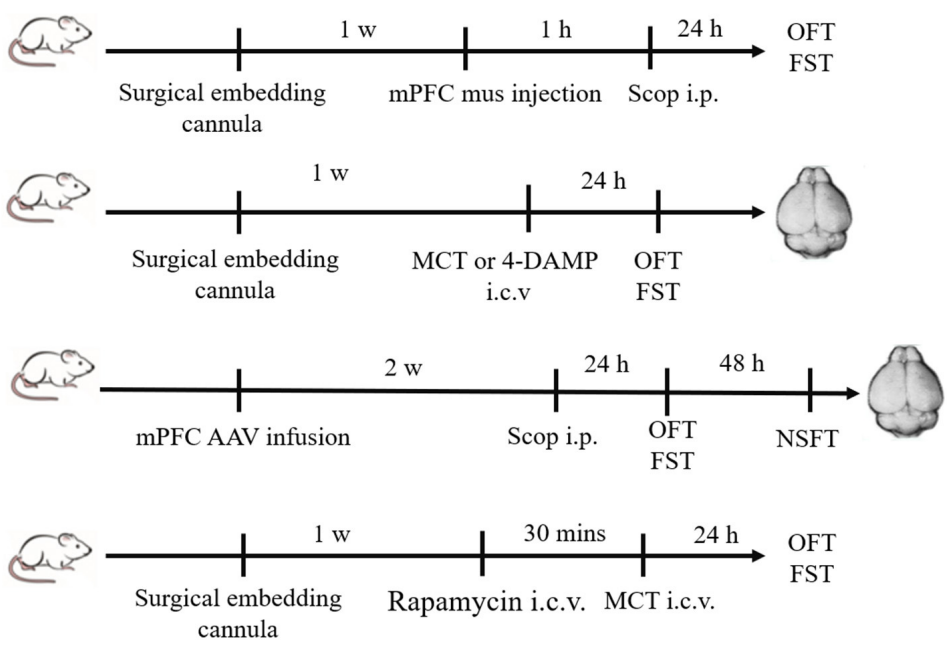AAV-CHRM2 was used to knock down M2-AChR (From BrainVTA)
The viruses used in this article from BrainVTA are in the table below
|
Custom-Made AAVs |
pAAV-U6-BBSI-shRNA-CMV-EGFP-pA |
|
AAV-CHRM2-shRNA-CMV-EGFP-pA |
Shuang Liu, Dandan Shi, Zuoli Sun, Yi He, Gang Wang, Jian Yang
Pub Date: 2021-04-06,
DOI: 10.3389/fpsyt.2021.601985,
Email: sales@brainvta.com
Background: Scopolamine, a non-selective muscarinic acetylcholine receptor (M1∼5-AChR) antagonist, has rapid and robust antidepressant effects in humans and other species. However, which of the five M-AChRs mediates these therapeutic effects has not been fully identified. Several studies implicate M2-AChR as a potential antidepressant target of scopolamine. This study aimed to explore the role of M2-AChR in scopolamine’s antidepressant-like effects and determine the underlying mechanisms.
Methods: We used the classic novelty suppressed feeding test (NSFT), open field test (OFT) and forced swim test (FST) to observe antidepressant-related behaviors of normal rats,medial prefrontal cortex (mPFC) neuron silenced rats andM2-AChR knockdown rats treated with scopolamine. In a further experiment, the M2 cholinergic receptor antagonist methoctramine (MCT) was injected intracerebroventricularly into normal rats. Levels of mTORC1 and brain-derived neurotrophic factor (BDNF) in the mPFC of animals were analyzed by Western blotting.
Results: Consistent with previous studies, mPFC was required for the antidepressant-like effects of scopolamine, and intracerebroventricular injection of MCT into rats could produce similar antidepressant-like effects. Use of AAV-shRNA to knock down M2-AChR in the mPFC resulted in the antidepressant-like effects of scopolamine being blunted. Furthermore, Western blotting demonstrated increased expression of mTORC1 signaling and BDNF in MCT-treated rats.
Conclusion: Our results indicate that M2-AChR in the mPFC mediates the antidepressant-like effects of scopolamine by increasing the expression of BDNF and activating the mTORC1 signaling pathway.
 Figure 1. Schematic diagram of experimental procedures.
Figure 1. Schematic diagram of experimental procedures.
As a potential antidepressant target of scopolamine, this study aimed to explore the role of M2-AChR in scopolamine’s antidepressant-like effects and determine the underlying mechanisms. Through a series of behavioral experiments, the authors found that M2-AChR in the mPFC is required for the antidepressant-like effects of scopolamine, and enhancement of the BDNF/mTORC1 signaling pathway may be the downstream mechanism antagonizing M2-AChR.
BrainVTA offers viral vector construction & virus packaging services for AAV, LV, RABV, PRV, HSV and VSV that help researchers explore questions about genes, neurons, circuitry structure, function of brain network, mechanism and treatment of diseases.
If you have any needs, just email us at
sales@brainvta.com.
